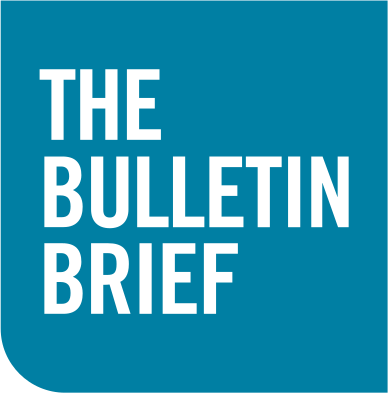Toronto’s tech engine: How U of T is building the future of innovation

(photo by Matthew Volpe)
Published: August 6, 2025
More than 10,000 innovators recently gathered to celebrate the Toronto region’s thriving tech scene during Toronto Tech Week, highlighting the city’s status as Canada’s fastest-growing AI talent market and its position as the country’s leading life sciences hub.
Among the highlights: a keynote address by the University of Toronto’s Geoffrey Hinton, the University Professor emeritus and Nobel laureate known as the “godfather of AI,” who also participated in a lively conversation with his former protégé Nick Frosst, a U of T alum and cofounder of Canada’s leading AI startup, Cohere.

One of several events hosted by U of T – or featuring its researchers – the talk underscored the university’s role as the Toronto region’s engine of innovation. Yet, while Toronto has become a magnet for global investment in fields such as AI and life sciences, there’s a pressing need to build infrastructure to sustain this momentum and accelerate future growth.
U of T News sat down with Leah Cowen, U of T’s vice-president, research and innovation, and strategic initiatives, to discuss how the university is working to build spaces and programs to generate the life-changing discoveries and innovations of the future – and what more needs to be done.
What made the university such a central hub for Toronto Tech Week?
Current developments in artificial intelligence would not have been possible without the pioneering research of Geoffrey Hinton – and associated researchers and students – on neural networks and machine learning. The translation of AI research into commercial ventures then accelerated with the launch of the Pan-Canadian AI Strategy and the founding of the Vector Institute in 2017.
Fast forward to today and Toronto continues to lead the country in the number of AI startups, with more than 200 created by U of T students, faculty and alumni that have drawn some $5 billion in investment over the past five years.
U of T also sits at the intersection of AI and life sciences, supported by our network of 14 affiliated academic research hospitals. Innovations in health analytics, where AI models are helping improve diagnostics, clinical workflows and faster drug discovery, are all enabled by collaboration between AI and life sciences researchers and clinicians.
In short, U of T functions as a magnet and accelerator for Toronto’s tech ecosystem.
You recently spoke about the university’s infrastructure projects at a Toronto Region Board of Trade symposium. How do they play into U of T’s innovation goals?
The first phase of the Schwartz Reisman Innovation Campus is a great example. It’s designed to be a space where academia and industry collide, generating new ideas and ways to bring them to market. To take one recent example of the success of this vision: the new AxL Venture Studio, which has a bold plan to launch 50 startups in the next five years, chose to set up at Schwartz Reisman precisely because of its proximity to cutting-edge AI research, including the Vector Institute and U of T Entrepreneurship.
Phase 2 of the campus will include 400,000 square feet of wet lab space. That’s crucial for startups and scaleups in the region, particularly in biotech, where access to such labs is in short supply.
We are focused on bringing together the right stakeholders, at the right time, to build an ecosystem where companies can reach scale.

What other opportunities do you see?
There’s an opportunity to work with hospital partners to leverage U of T’s status as a global research leader across many different fields – life sciences, computer science, AI, engineering – to continue advancing the region’s biomedical corridor. Our leadership rivals hubs such as those found in Boston, Baltimore or emerging biomedical centres such as Singapore’s Biopolis, including in commercializing research.
To that end, we are building a new wing of the medical sciences building, designed for 21st-century research and education, where wet labs and computational research environments will exist side by side, along with renewed MD educational spaces. It will be home to new centres of excellence that improve access to advanced treatments and preventative health care. This physical infrastructure will be equipped with state-of-the-art technologies that allow us to ask big, bold questions and look at things in new ways. It will educate health-care professionals and provide training to partners such as the Northern Ontario School of Medicine, helping to address health-care gaps province wide.
At the same time, the university has established a global footprint in accelerated materials discovery. Through the CFREF (Canada First Research Excellence Fund)-funded Acceleration Consortium, one of several U of T institutional strategic initiatives, self-driving labs (SDLs) – powered by automation, AI and robotics – are being used to design new drugs, develop new batteries or create novel materials for other applications, including clean energy. The “consortium” in the Acceleration Consortium refers to a growing network of industry partners, like BASF, Unilever and Siemens, who are already leveraging these labs, as well as their researchers and trainees.
What can we do to build on the momentum?
We have an opportunity and, I would argue, a responsibility to lead in turbulent times. We are producing world-class talent and research at an unmatched scale and quality, and we have the capability to build the future of AI and other fields such as quantum computing – with benefits that flow far beyond the university.
But we need to recognize that Canada is underfunded in research at every stage, from basic discovery to private-sector R&D. Other countries are moving aggressively, investing heavily in talent pipelines and innovation ecosystems. This is a critical moment that calls for public and private investment that takes risks on our innovators and matches the scale of the opportunity.
U of T is ready, but we need the broader ecosystem, including government and industry, to move with the same urgency.



